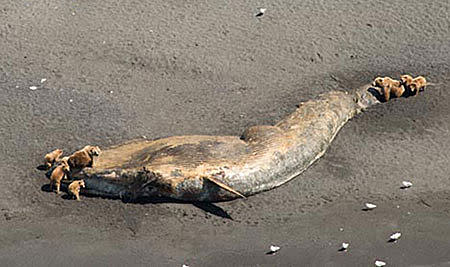Scientists baffled as 30 large whales die in mild Alaska waters

By: ACCUWEATHER
Scientists are baffled as to what may be causing a high volume of whale deaths in the Gulf of Alaska this summer.
From May 2015 to mid-August, 30 large whales have stranded in the region, triggering an investigation into the cause of the "unusual mortality event," the National Oceanic and Atmospheric Administration's National Marine Fisheries Service said in a statement.
"To date, this brings the large whale strandings for this region to almost three times the historical average," NOAA said.
The 11 fin whales, 14 humpback whales, one gray whale and four unidentified cetaceans have stranded along the shores of the Gulf of Alaska where water temperatures have consistently been above average for the four-month period.

Scientists are baffled as to what may be causing a high volume of whale deaths in the Gulf of Alaska this summer.
From May 2015 to mid-August, 30 large whales have stranded in the region, triggering an investigation into the cause of the "unusual mortality event," the National Oceanic and Atmospheric Administration's National Marine Fisheries Service said in a statement.
"To date, this brings the large whale strandings for this region to almost three times the historical average," NOAA said.
The 11 fin whales, 14 humpback whales, one gray whale and four unidentified cetaceans have stranded along the shores of the Gulf of Alaska where water temperatures have consistently been above average for the four-month period.
RELATED:
Record-Setting Toxic Algae Bloom Wreaks Havoc in Pacific From Alaska to California
Storms Could Exacerbate Spread of Contaminants From Colorado Mine Spill
Shade Balls in Los Angeles Reservoir to Save 300 Million Gallons of Water Annually

